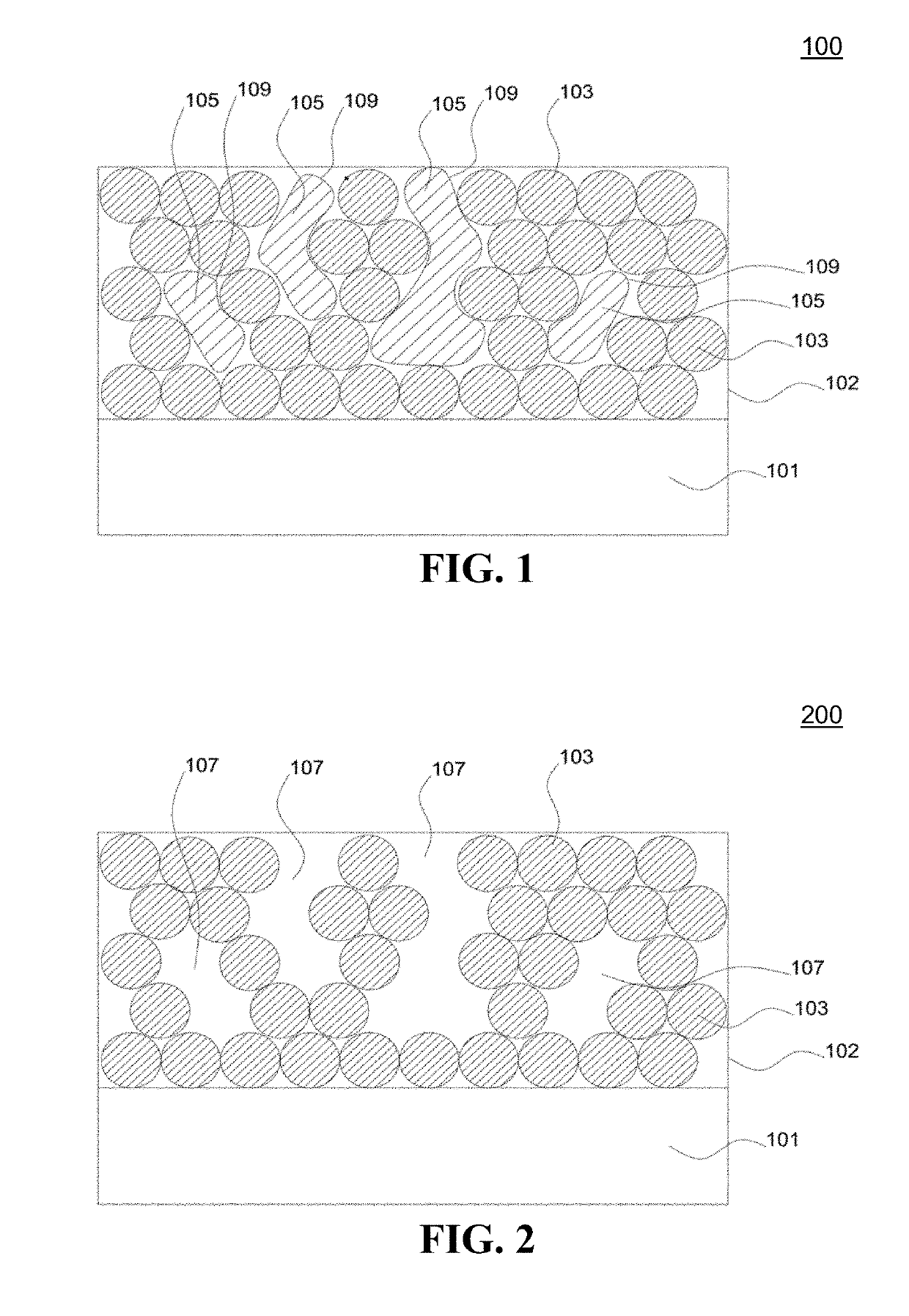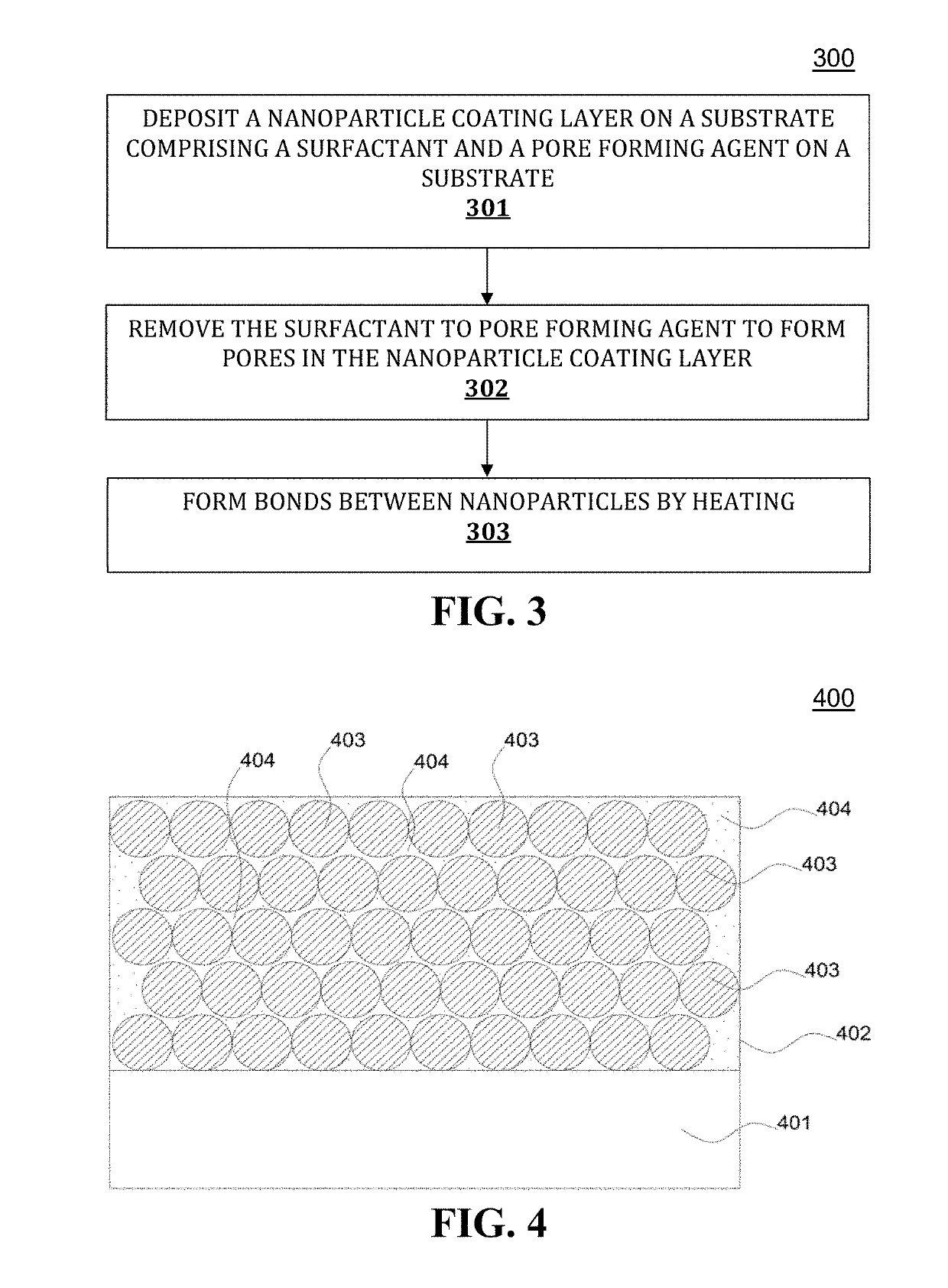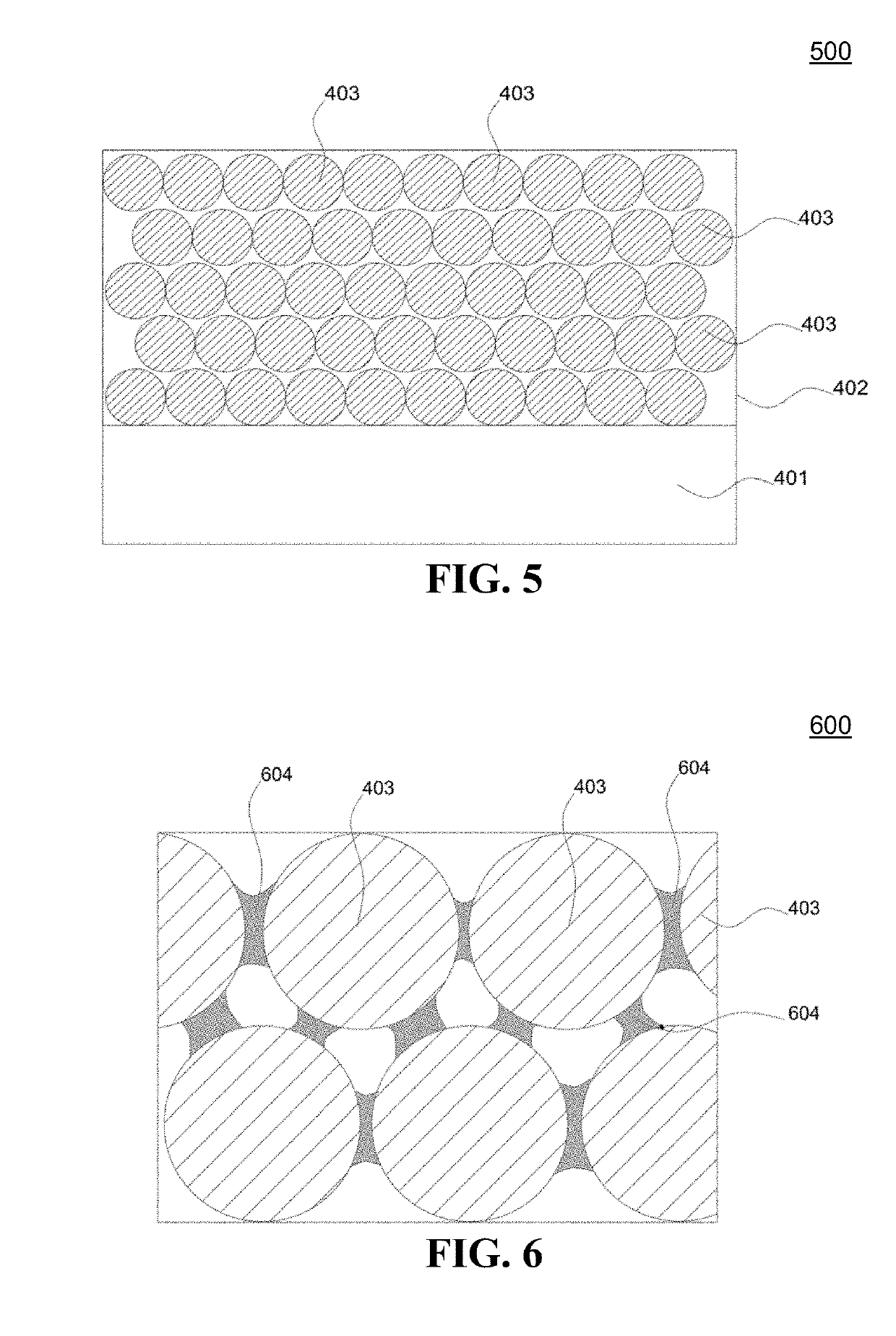Antireflective nanoparticle coatings and methods of fabrication
a nanoparticle coating and anti-reflective technology, applied in the field of optical coatings, can solve the problems of limited durability, complex design, and multi-layer ar coatings that operate over a broad band of wavelengths, and achieve the effects of improving wettability, improving coating uniformity and quality, and improving wettability
- Summary
- Abstract
- Description
- Claims
- Application Information
AI Technical Summary
Benefits of technology
Problems solved by technology
Method used
Image
Examples
example 1
[0124]An aqueous coating solution can be produced as follows. 200 ml of 20 wt % silica nanoparticles (SNOWTEX-N solution, available from Nissan Chemical Corporation) is dispersed in 1 liter of deionized water. Two grams of surfactant (TWEEN surfactant available from Sigma-Aldrich) is added to the solution and mixed for 2 minutes using a high shear mixer. 80 ml of solidifying material (10 wt % ammonium silicate, produced through ion-exchange of sodium silicate) is added slowly to the solution while stirring vigorously. The resulting mixture is an aqueous coating solution.
example 2
[0125]An aqueous coating solution was prepared in the same manner as set forth in Example 1, except that various other forms of silica nanoparticle solutions were utilized such as, but not limited to, silica nanoparticles stabilized by sodium counterions (e.g., SNOWTEX-PSM available from Nissan Chemical), silica nanoparticles stabilized by ammonium counterions (e.g., Levasil FX2040 N available from AkzoNobel), or non-charged silica nanoparticles stabilized in an acidic solution (e.g., SNOWTEX-PSMO available from Nissan Chemical).
example 3
[0126]A coating solution was prepared in the manner of Examples 1 and 2, but the solidifying material was replaced by other silicates such as, but not limited to, sodium silicate, potassium silicate, lithium silicate, and tetramethylammonium silicate.
PUM
| Property | Measurement | Unit |
|---|---|---|
| wt % | aaaaa | aaaaa |
| wt % | aaaaa | aaaaa |
| wt % | aaaaa | aaaaa |
Abstract
Description
Claims
Application Information
 Login to View More
Login to View More - R&D
- Intellectual Property
- Life Sciences
- Materials
- Tech Scout
- Unparalleled Data Quality
- Higher Quality Content
- 60% Fewer Hallucinations
Browse by: Latest US Patents, China's latest patents, Technical Efficacy Thesaurus, Application Domain, Technology Topic, Popular Technical Reports.
© 2025 PatSnap. All rights reserved.Legal|Privacy policy|Modern Slavery Act Transparency Statement|Sitemap|About US| Contact US: help@patsnap.com



